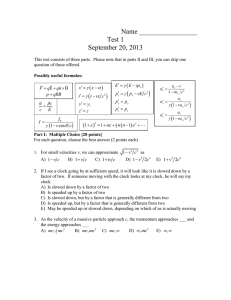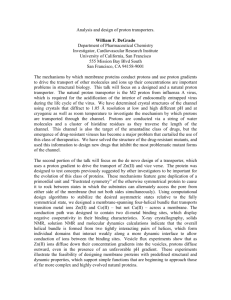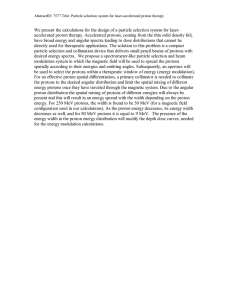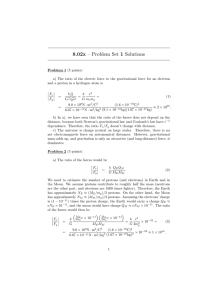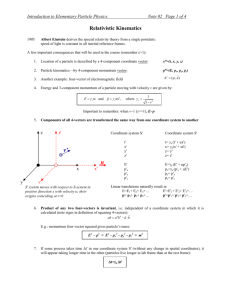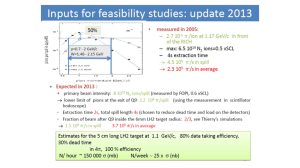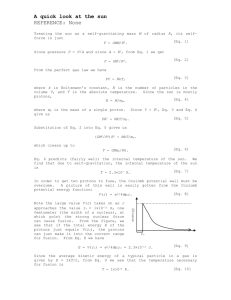Activity The purpose of this activity is to provide high school students
advertisement
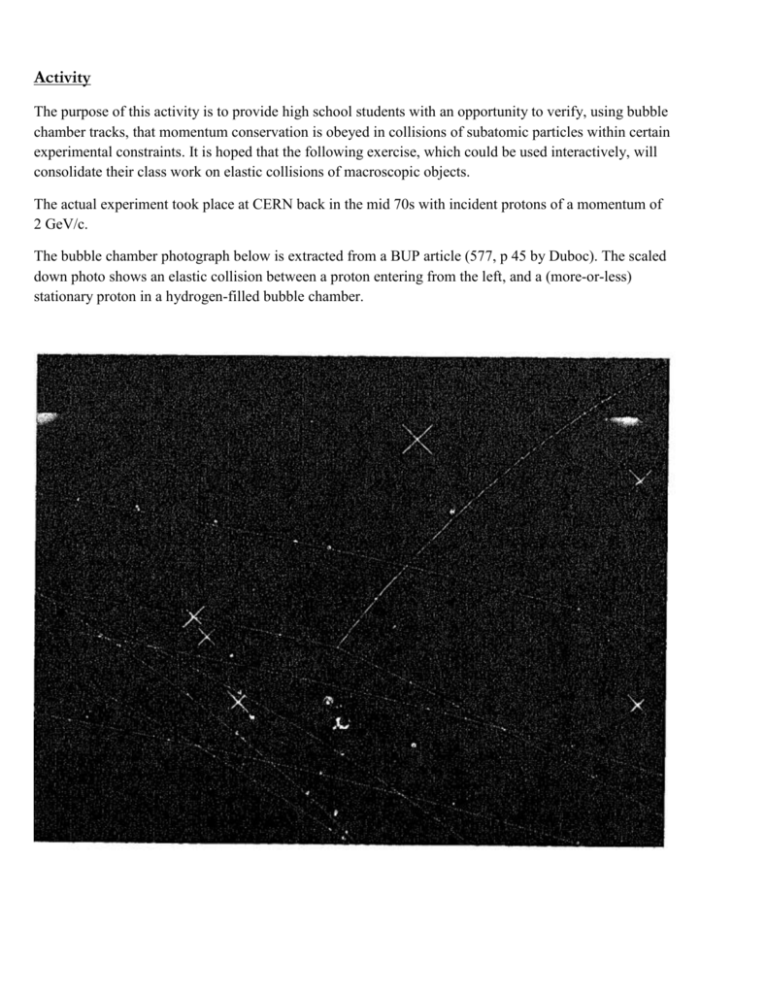
Activity The purpose of this activity is to provide high school students with an opportunity to verify, using bubble chamber tracks, that momentum conservation is obeyed in collisions of subatomic particles within certain experimental constraints. It is hoped that the following exercise, which could be used interactively, will consolidate their class work on elastic collisions of macroscopic objects. The actual experiment took place at CERN back in the mid 70s with incident protons of a momentum of 2 GeV/c. The bubble chamber photograph below is extracted from a BUP article (577, p 45 by Duboc). The scaled down photo shows an elastic collision between a proton entering from the left, and a (more-or-less) stationary proton in a hydrogen-filled bubble chamber. Students can measure the radii r of the paths followed by the protons, using this template of curves provided (click here), and since momentum p is directly proportional to r (click here), they can construct a vector diagram to verify that p = p1 + p2 within the errors of the method. The article lists the actual radii to be R1 = 400 cm, R2 = 380 cm and R3 = 85 cm. Comment: note that the angle between the paths followed by the outcoming protons is slightly less than 90o as expected (click on derivation). This is due to the fact that we should really be using relativistic mechanics here because a proton with a momentum of 2 GeV/c has a speed of about 0.9c. Problem: show, using E2 = p2c2 + m2c4, that the energy of the incoming proton is about 2.21 GeV/c2. Then, using v = pc2/E, show that v is about 0.9c.

